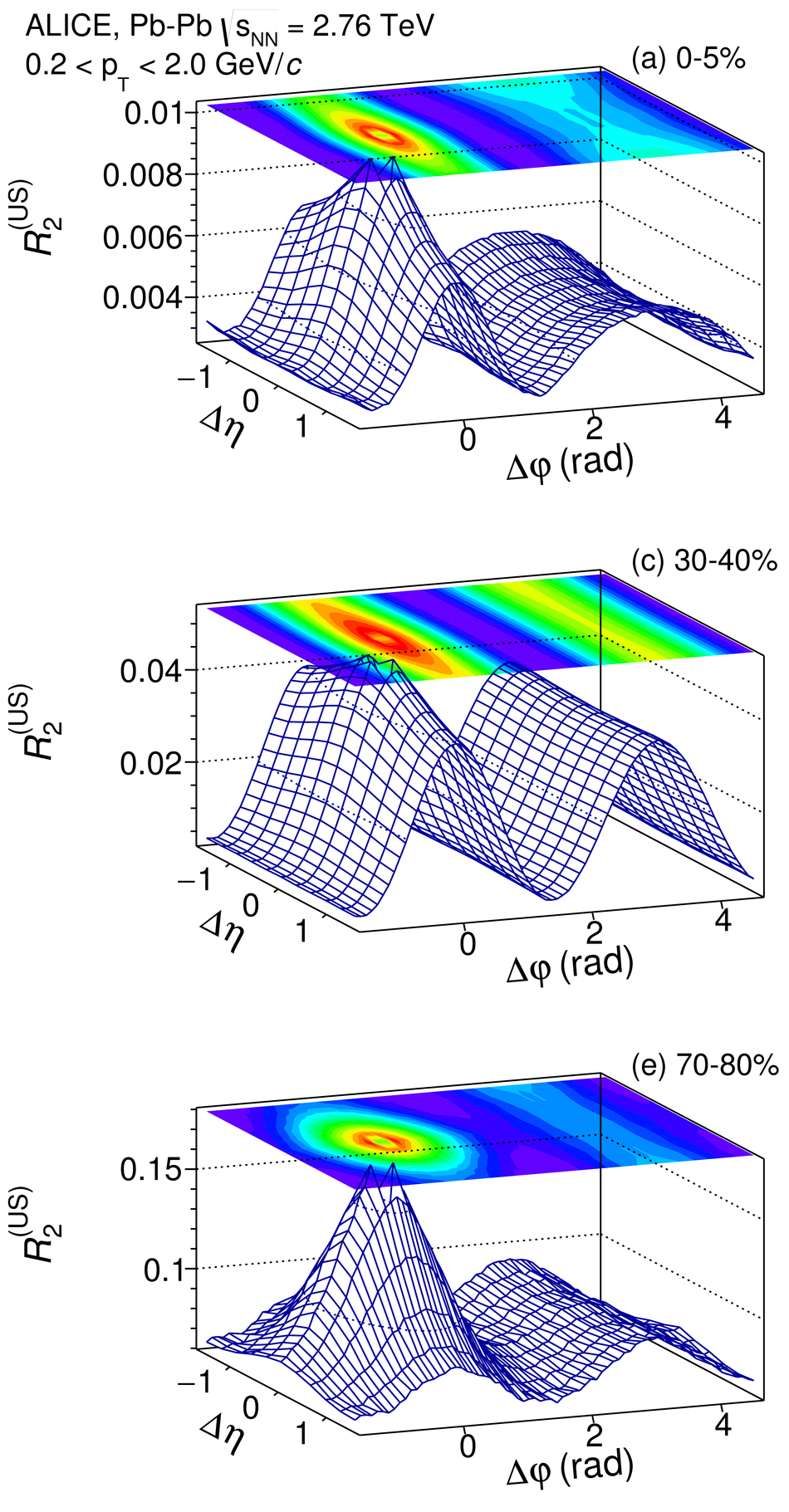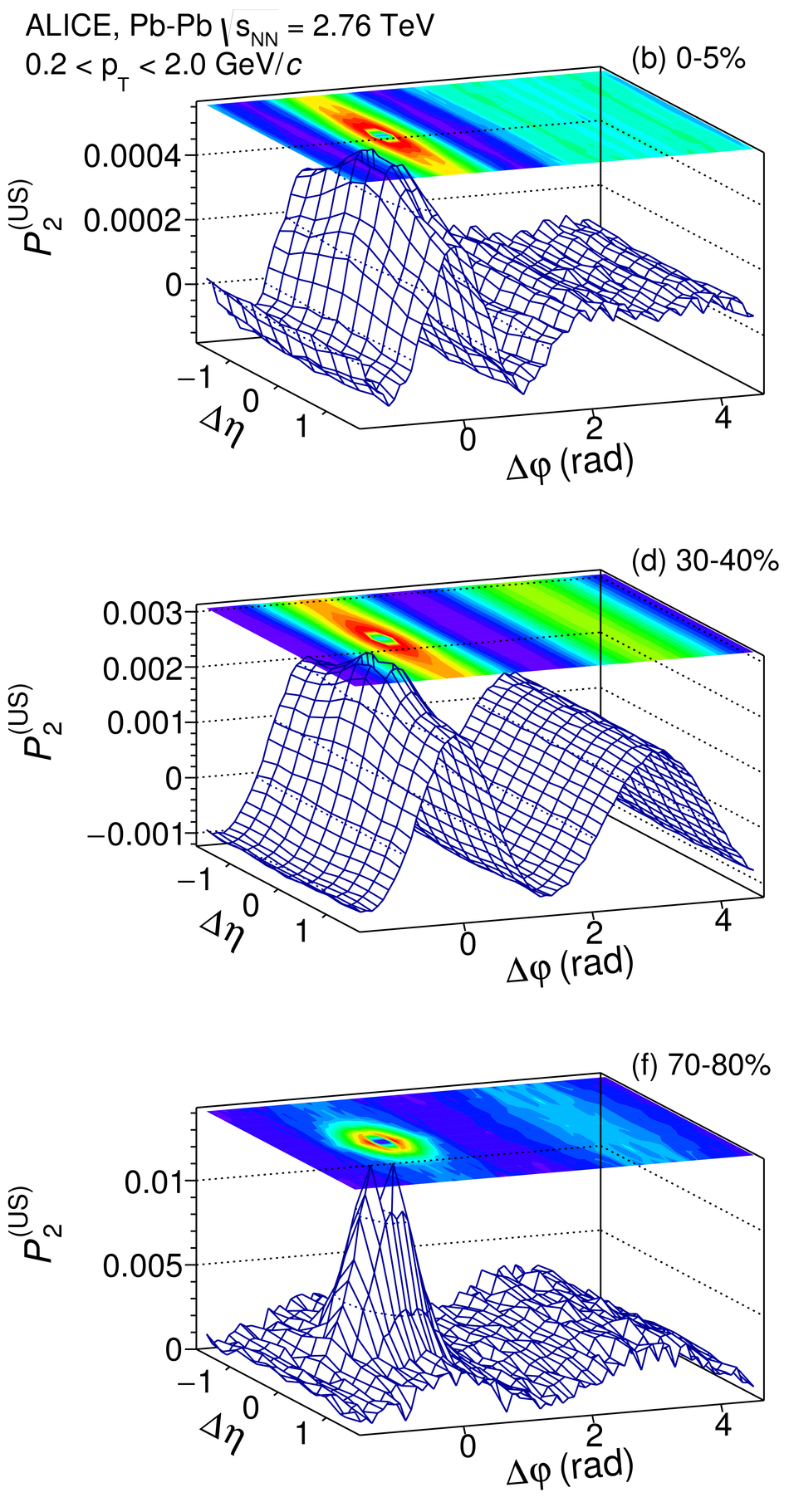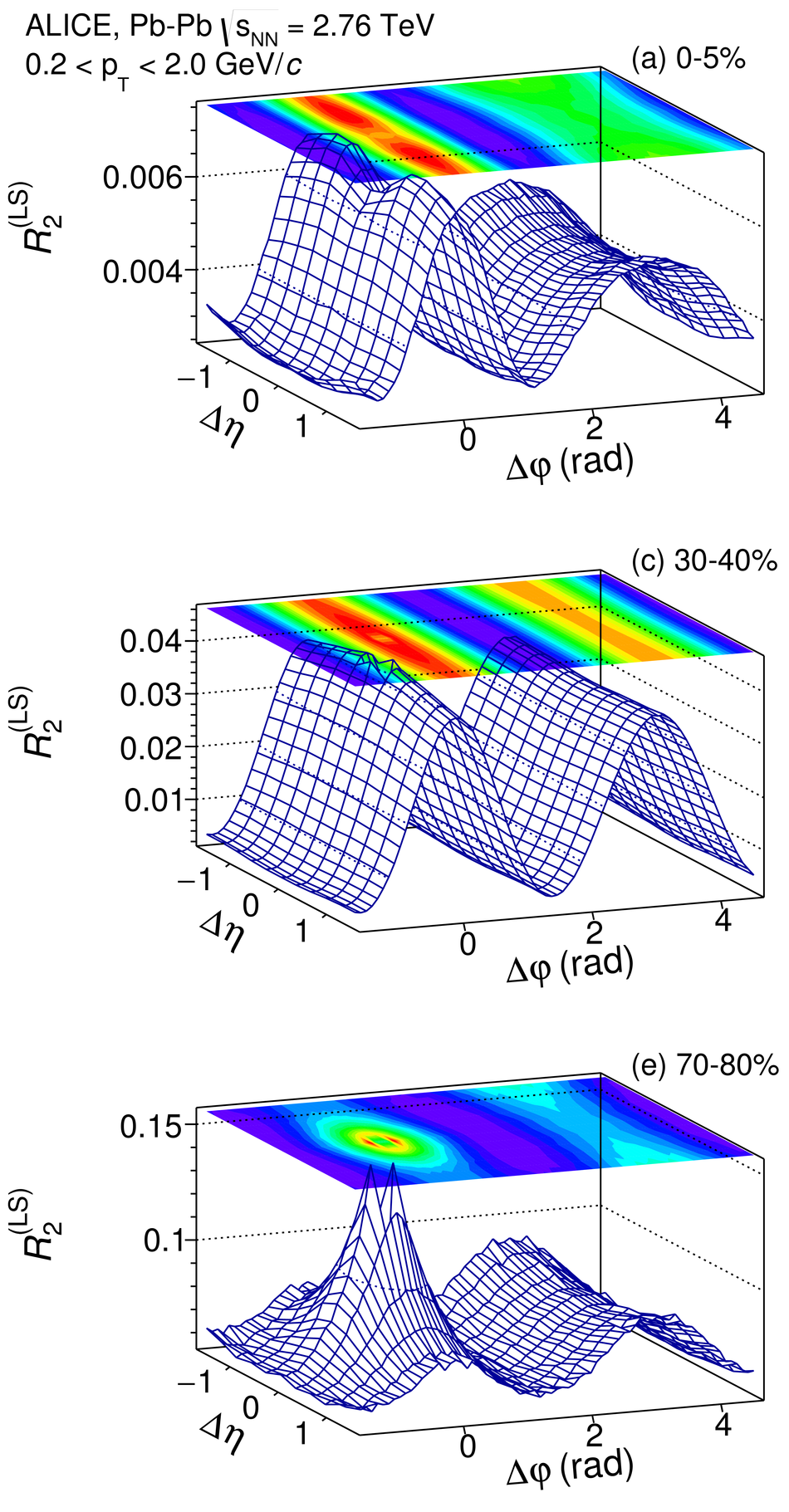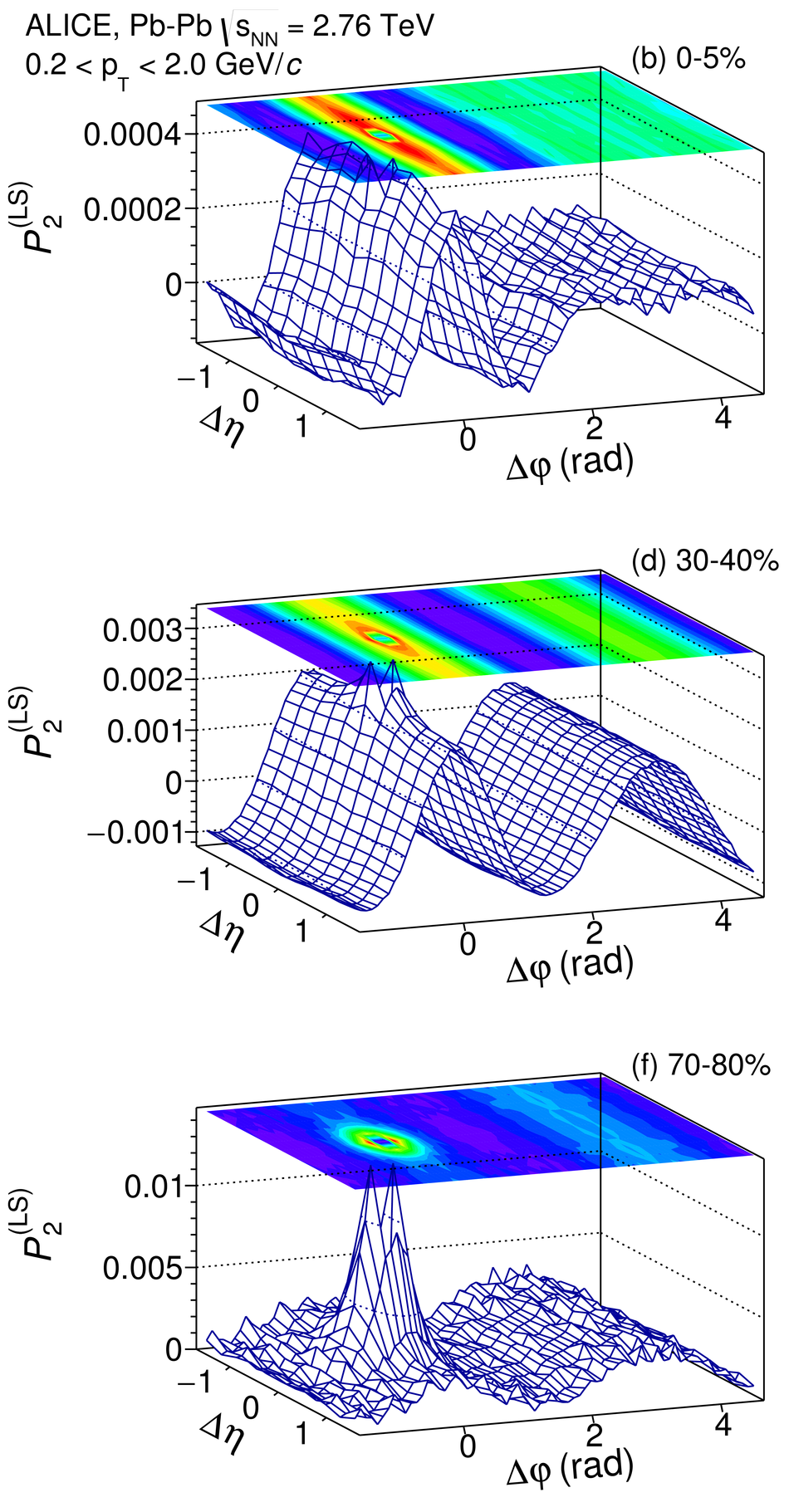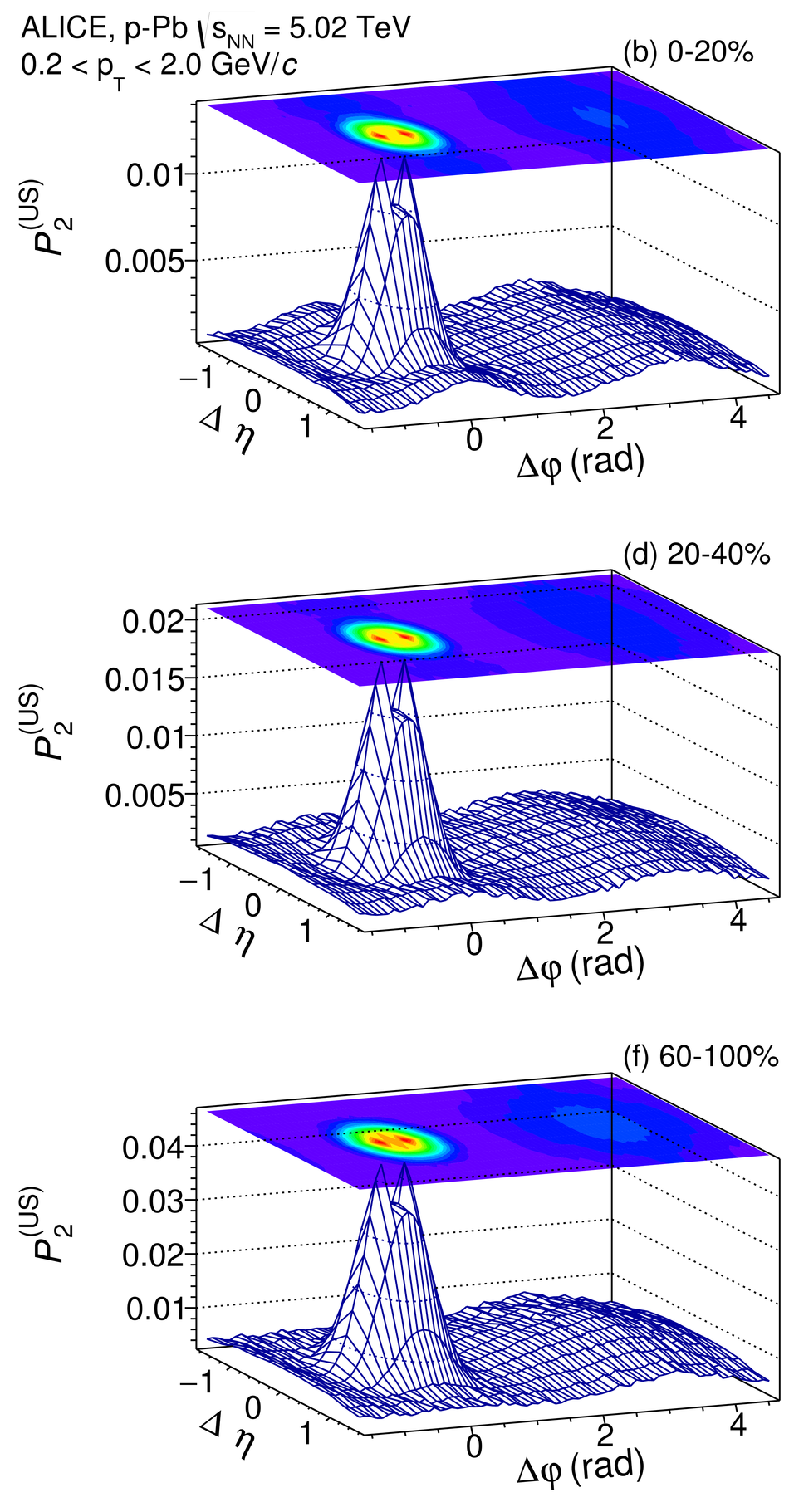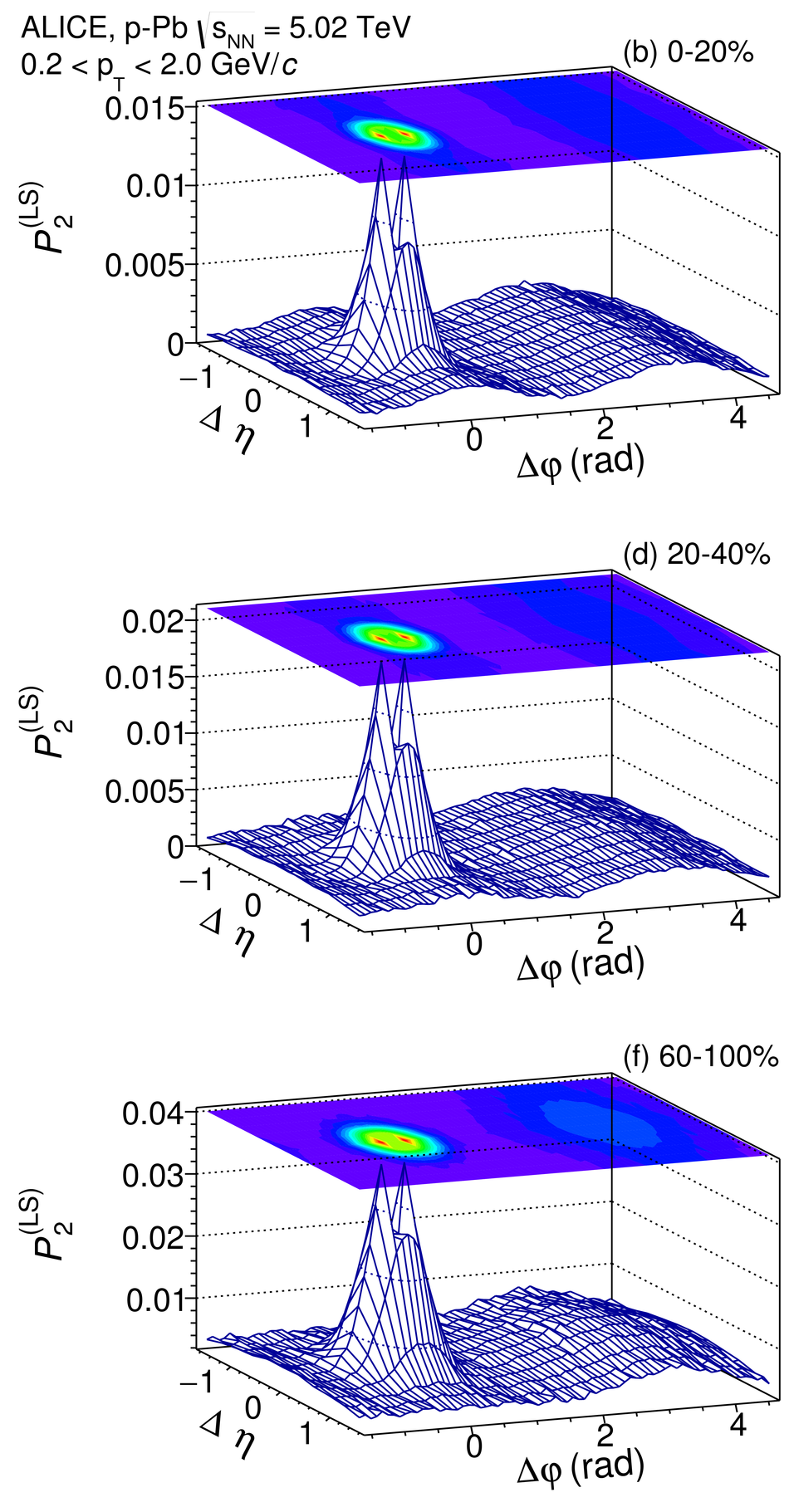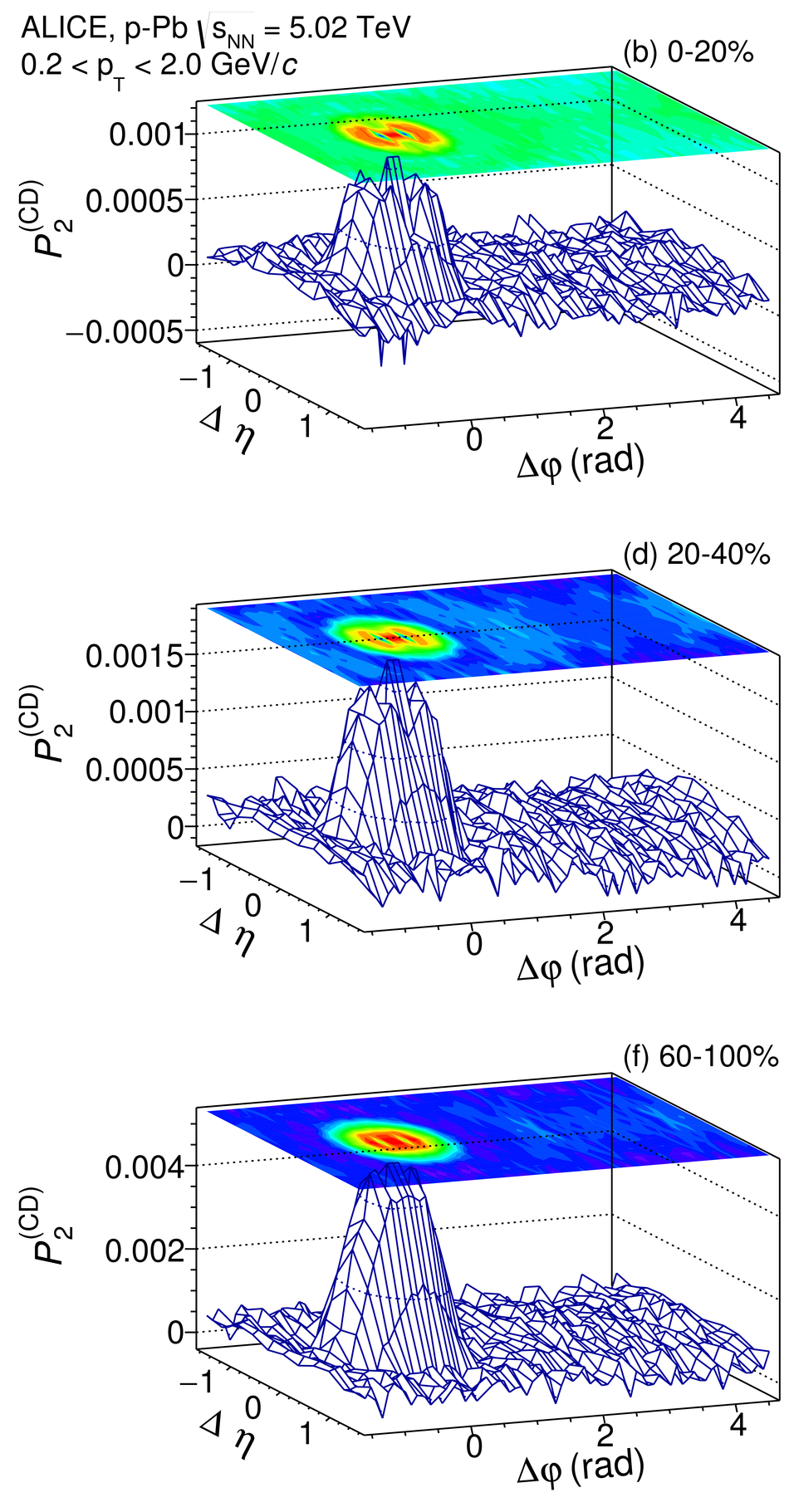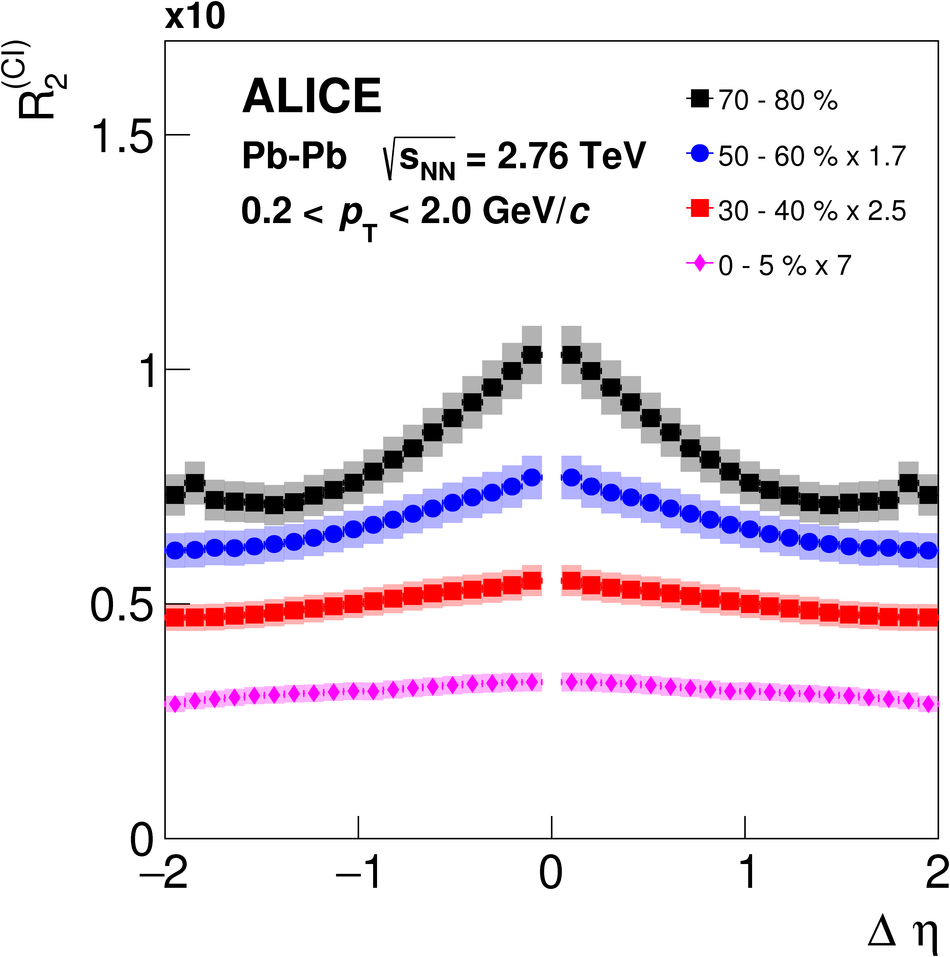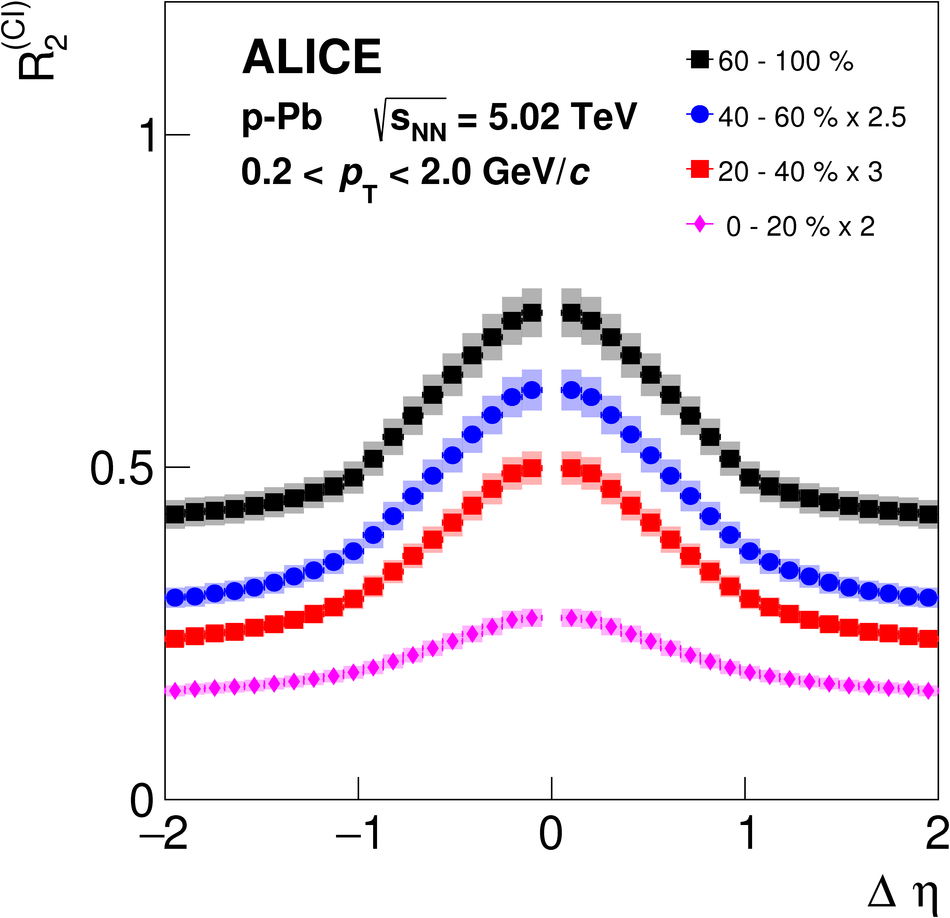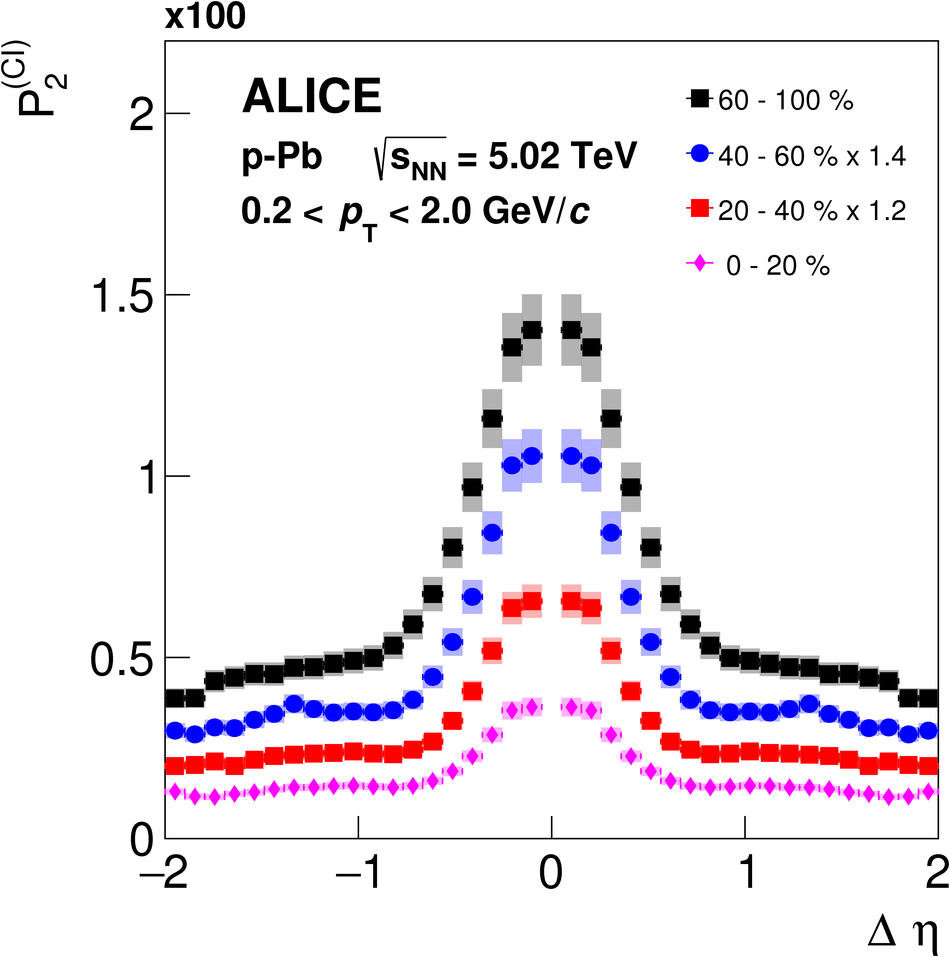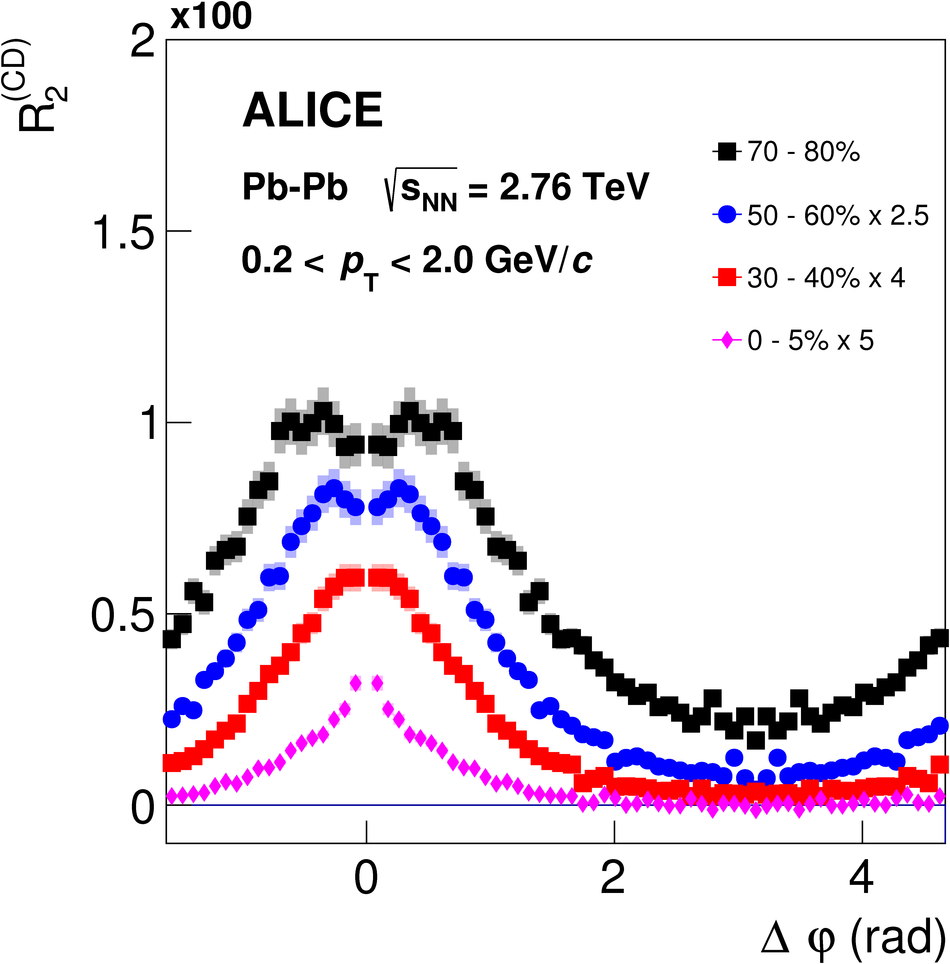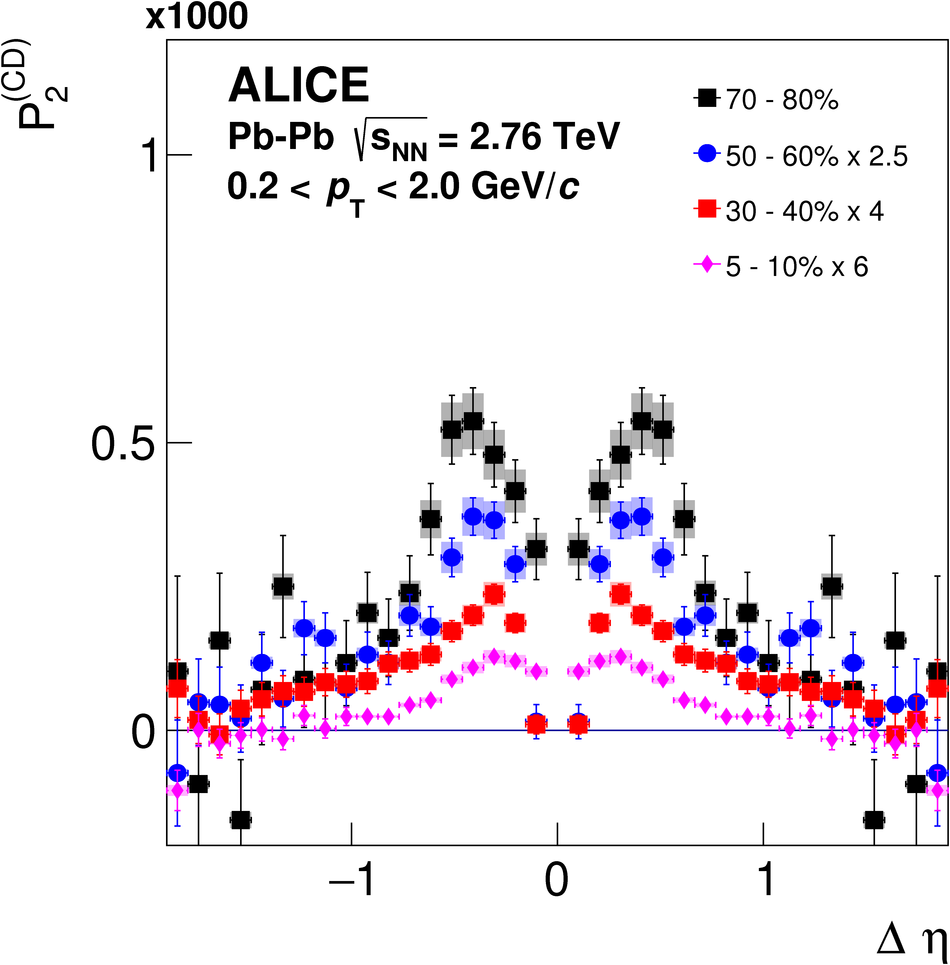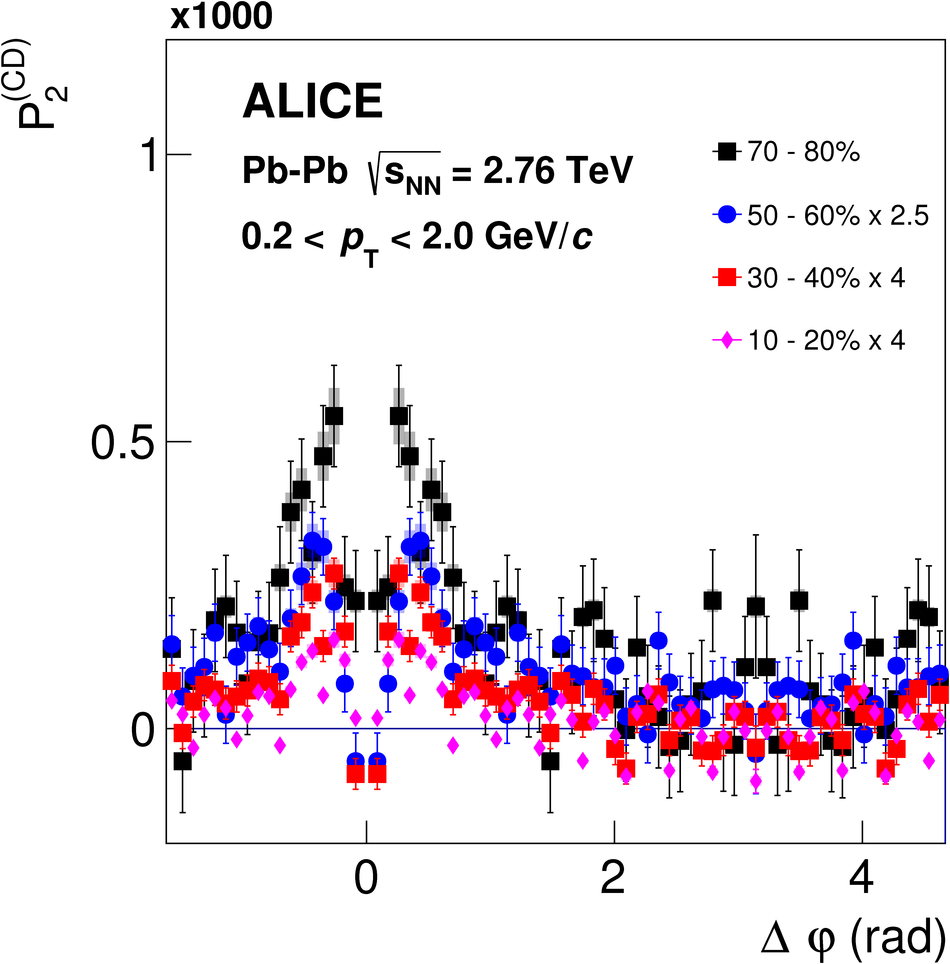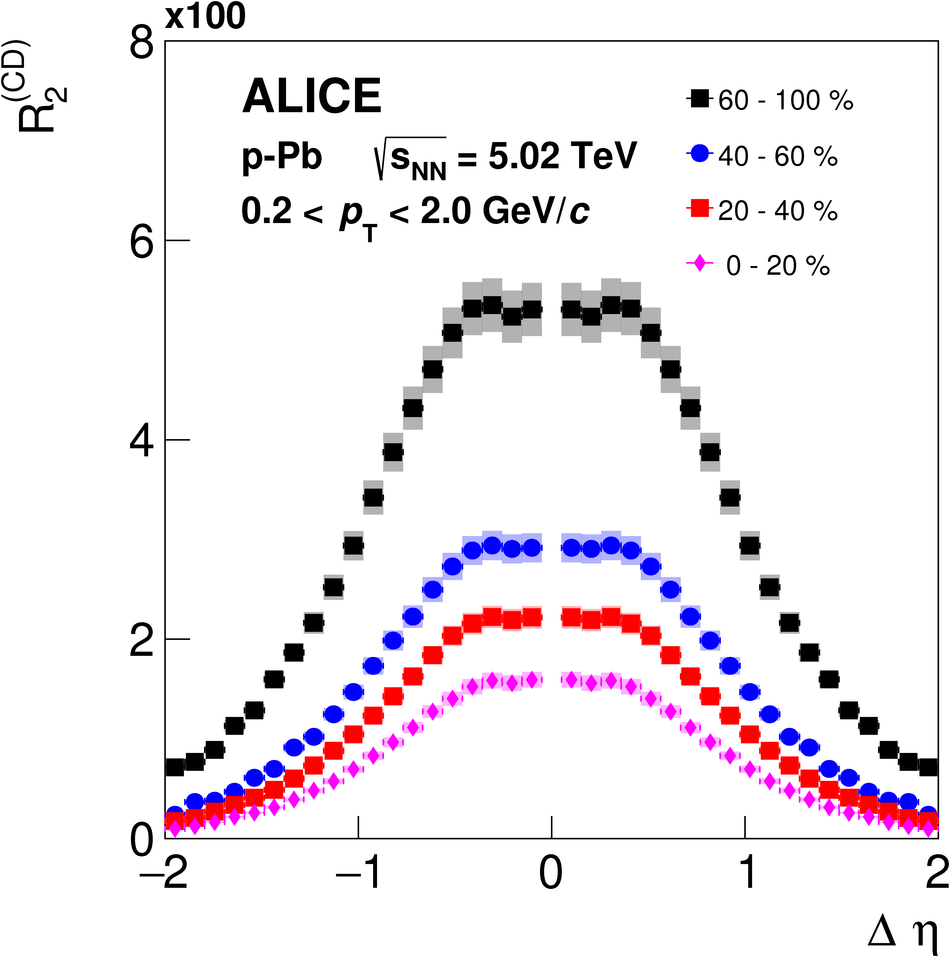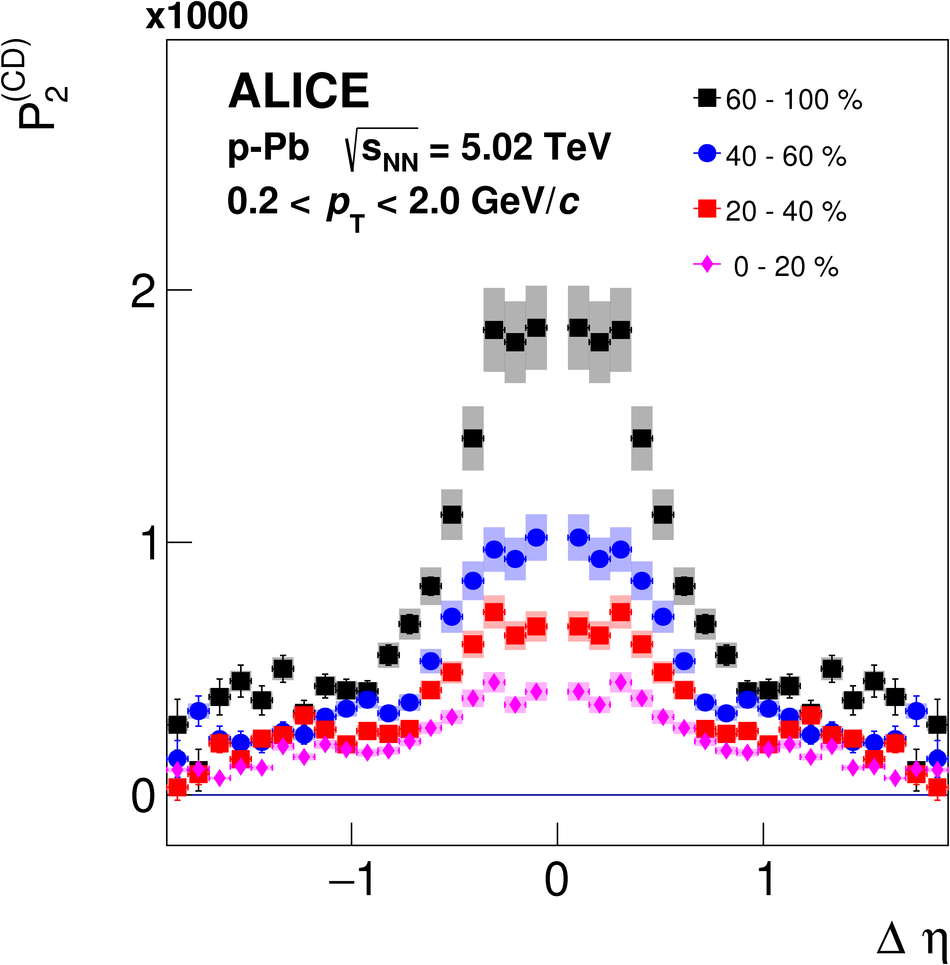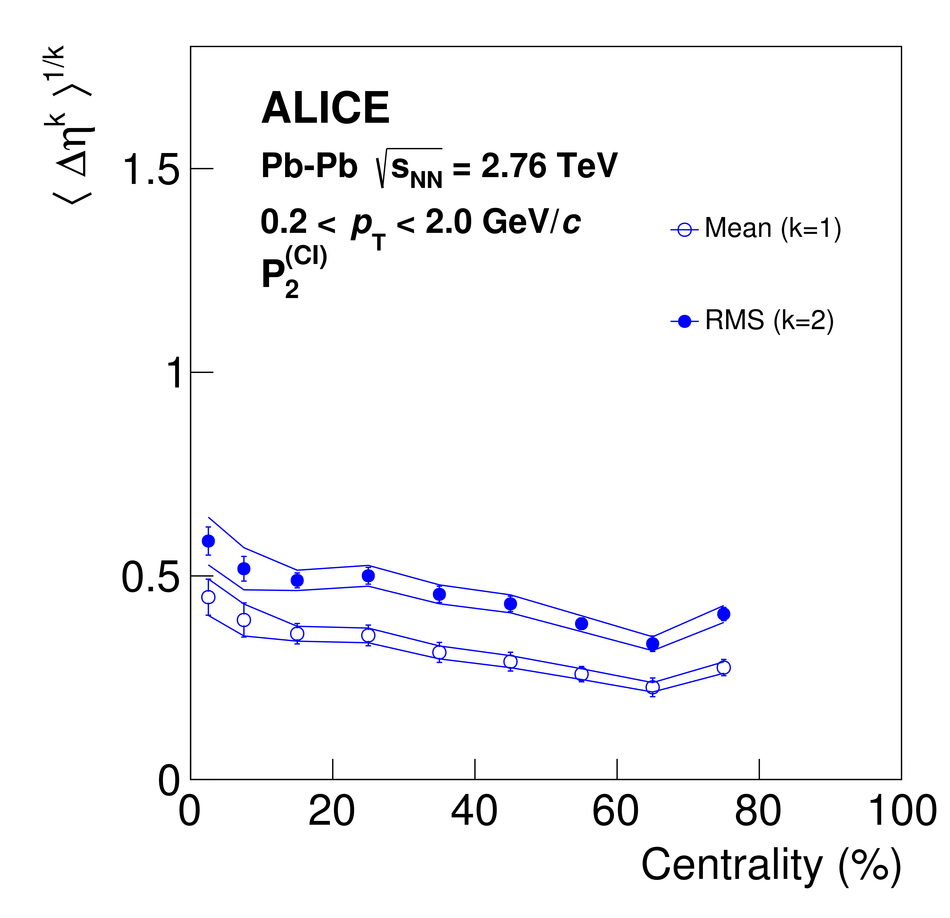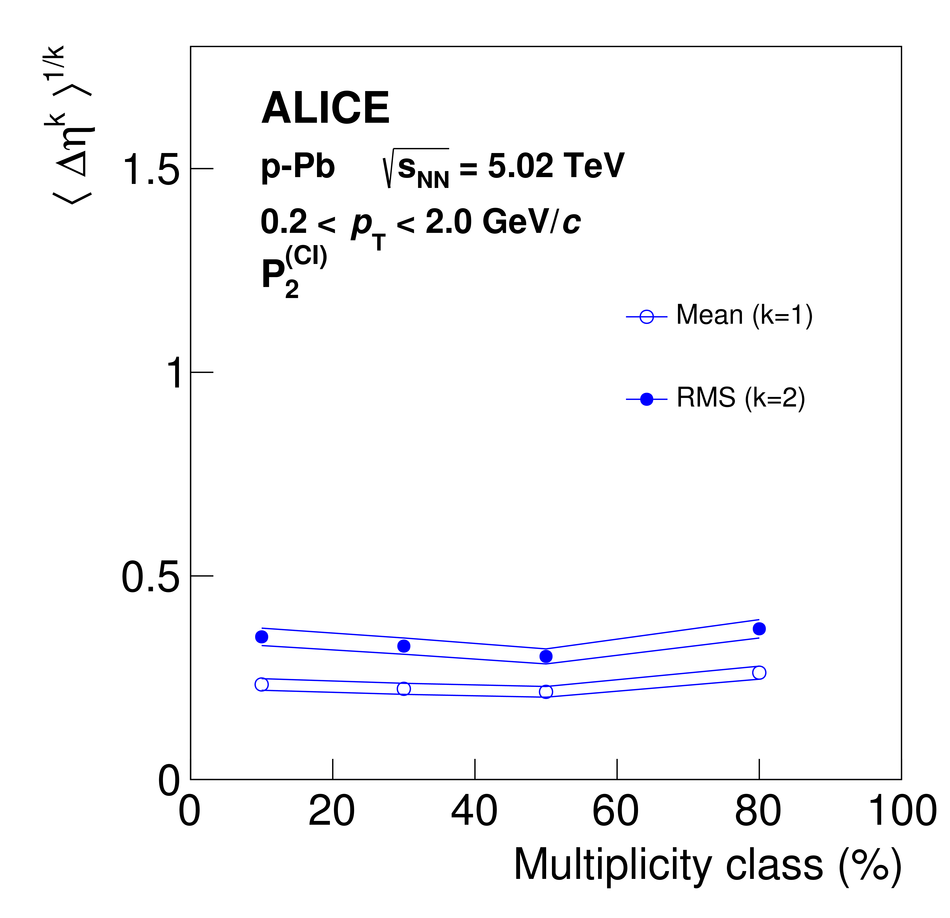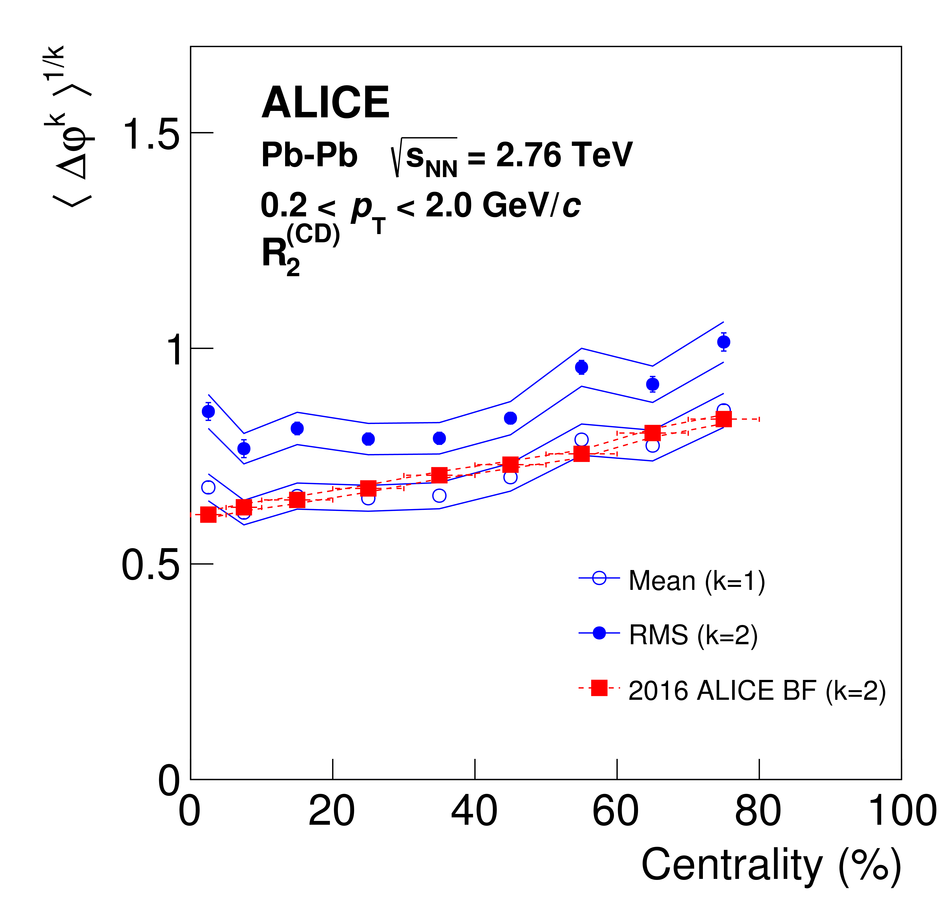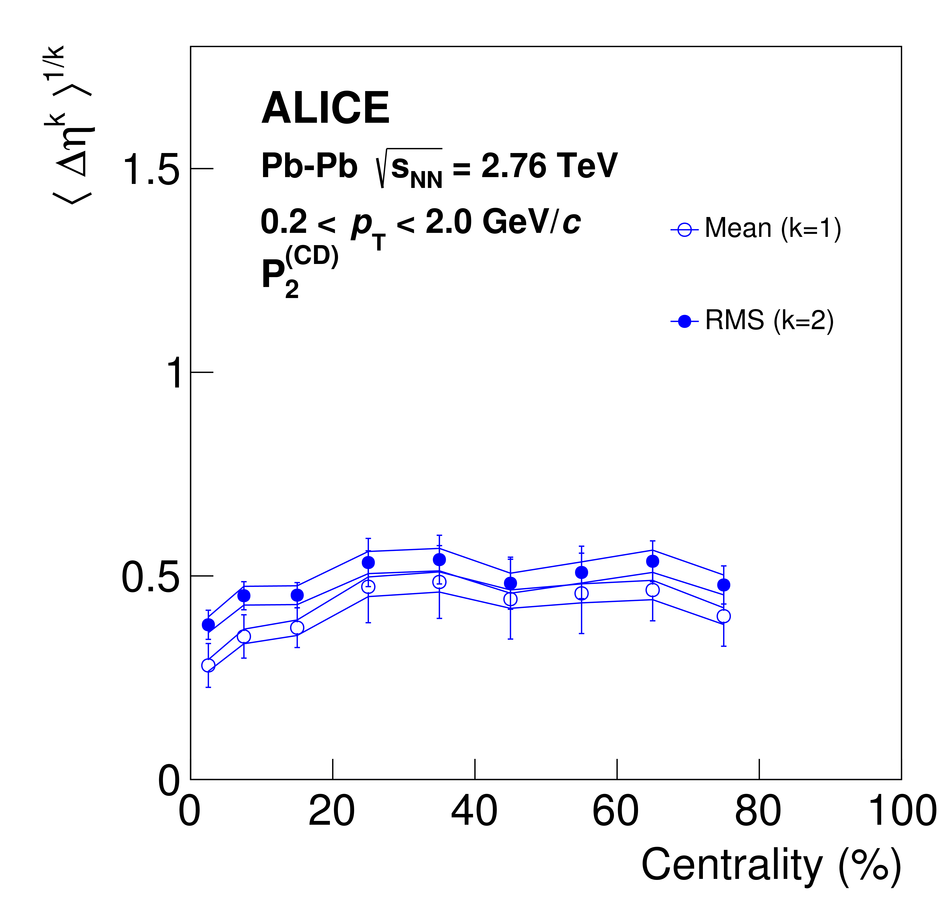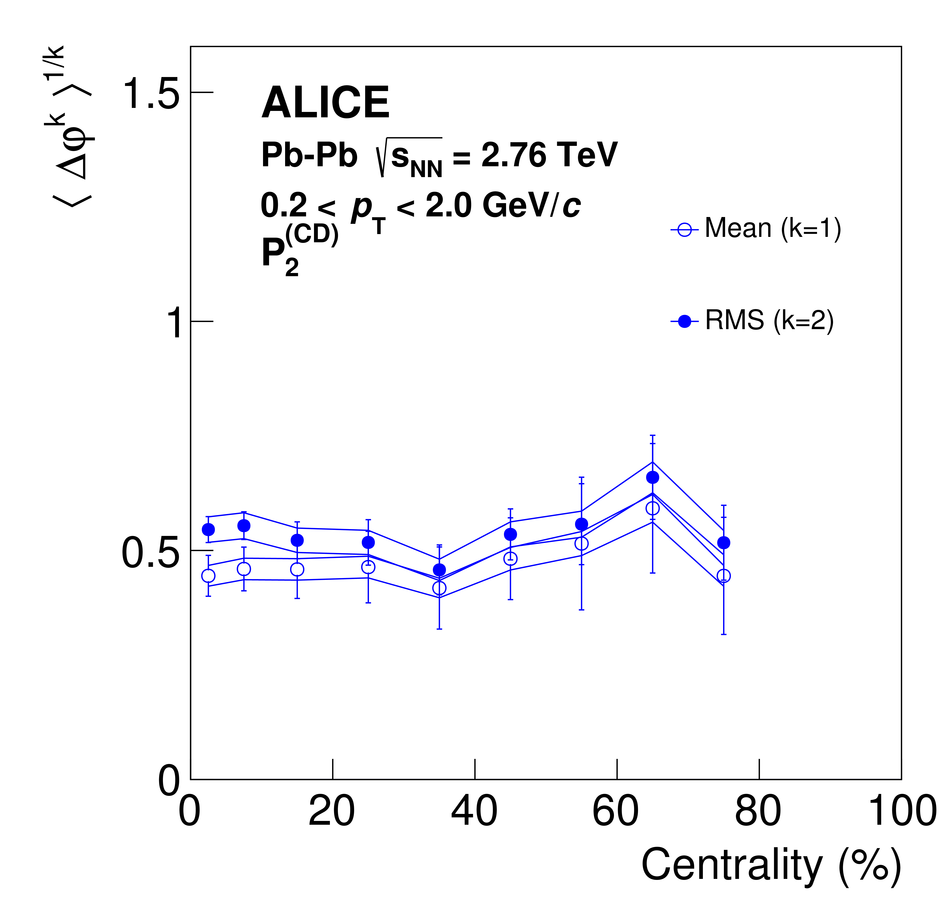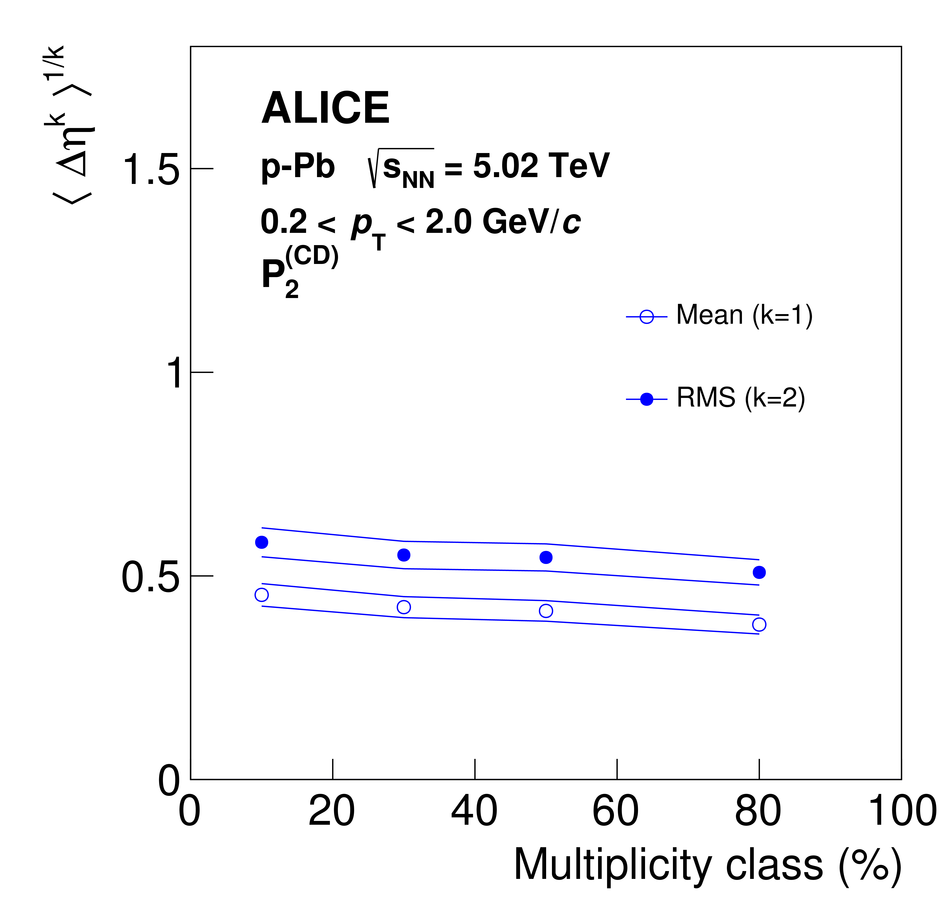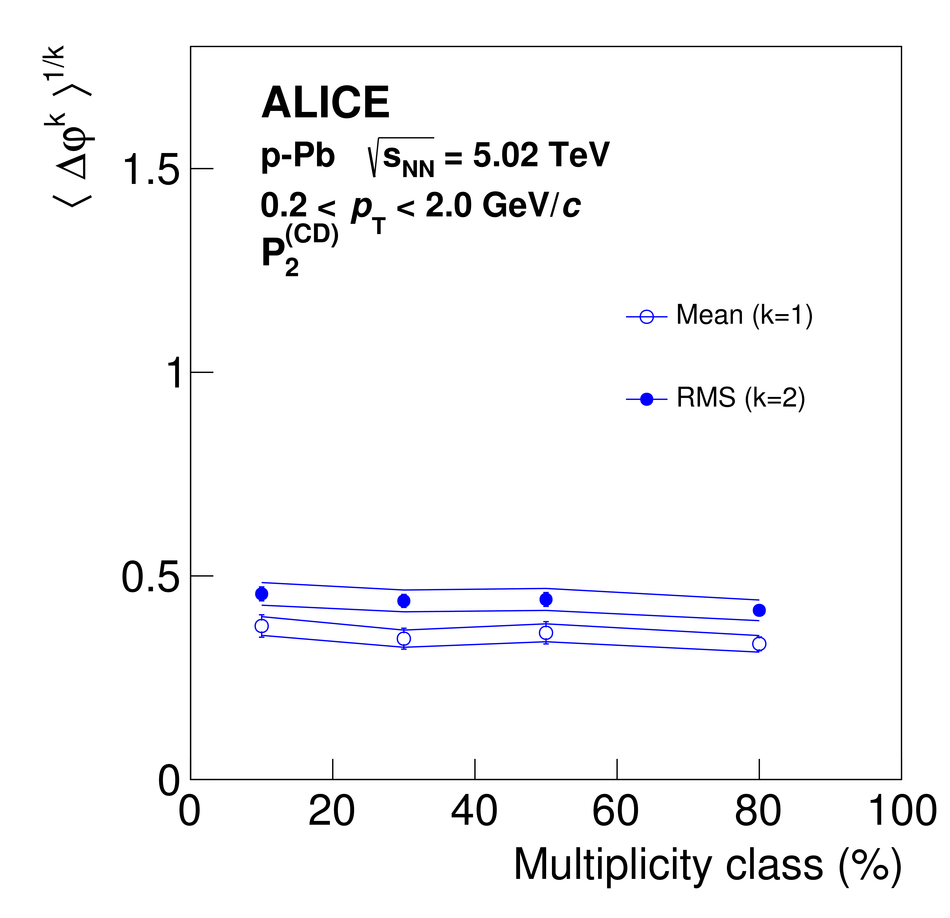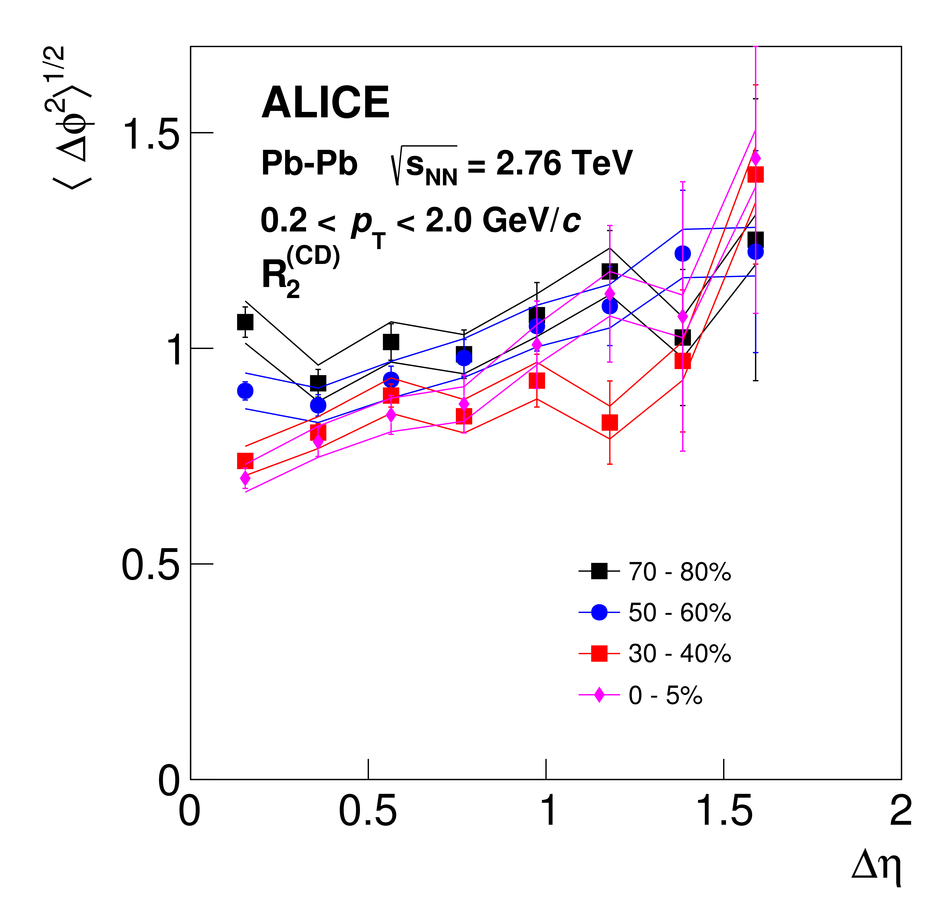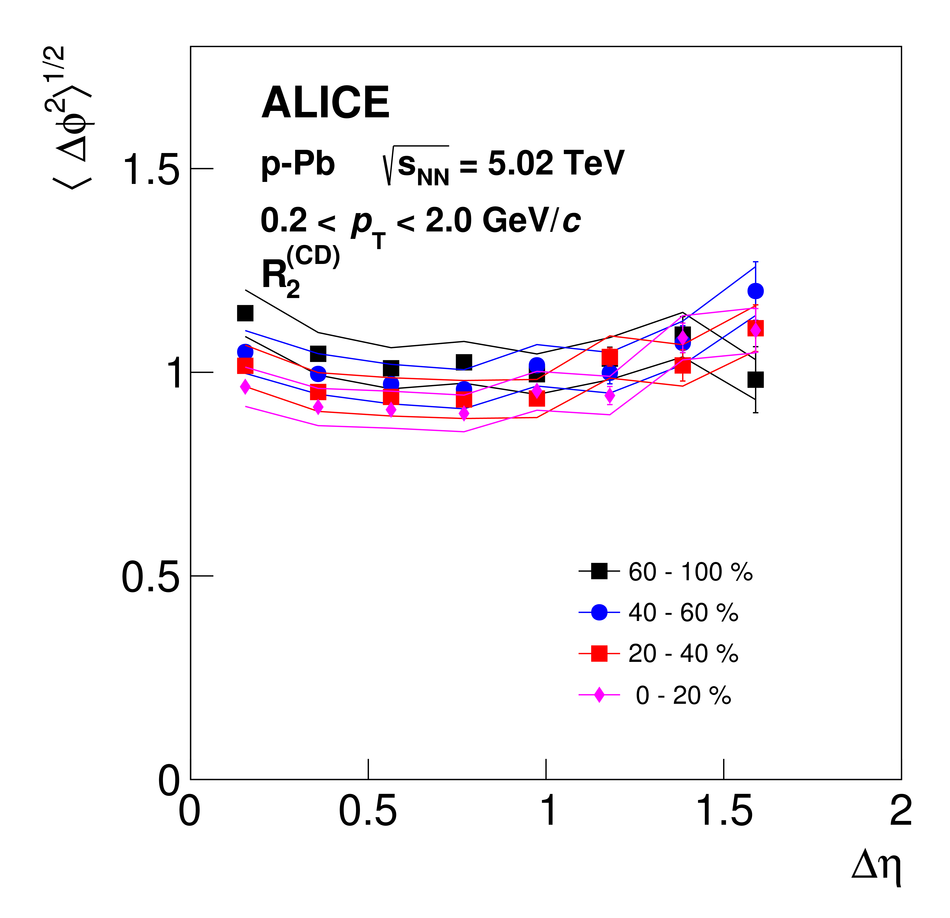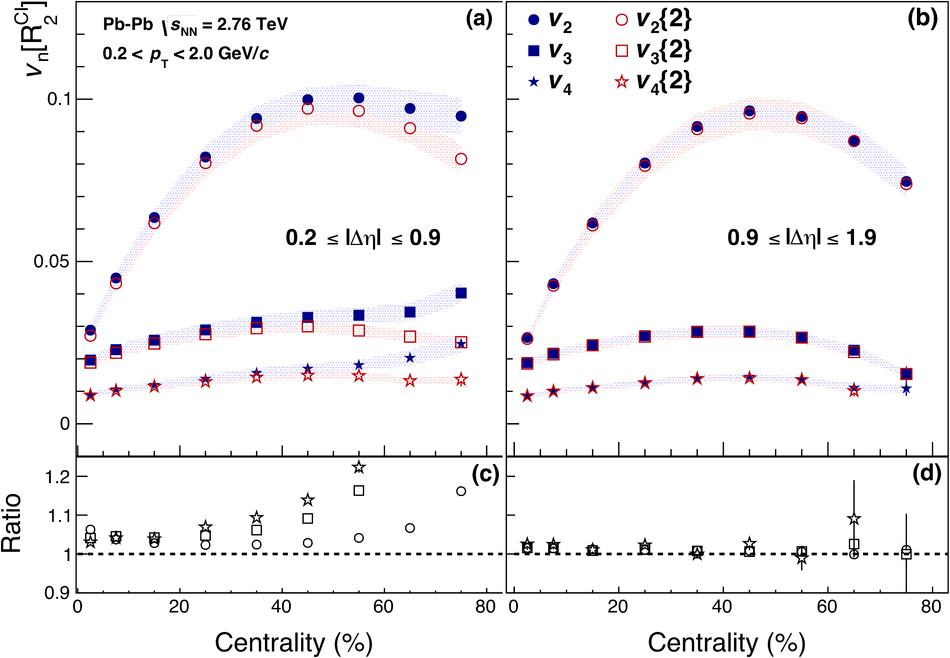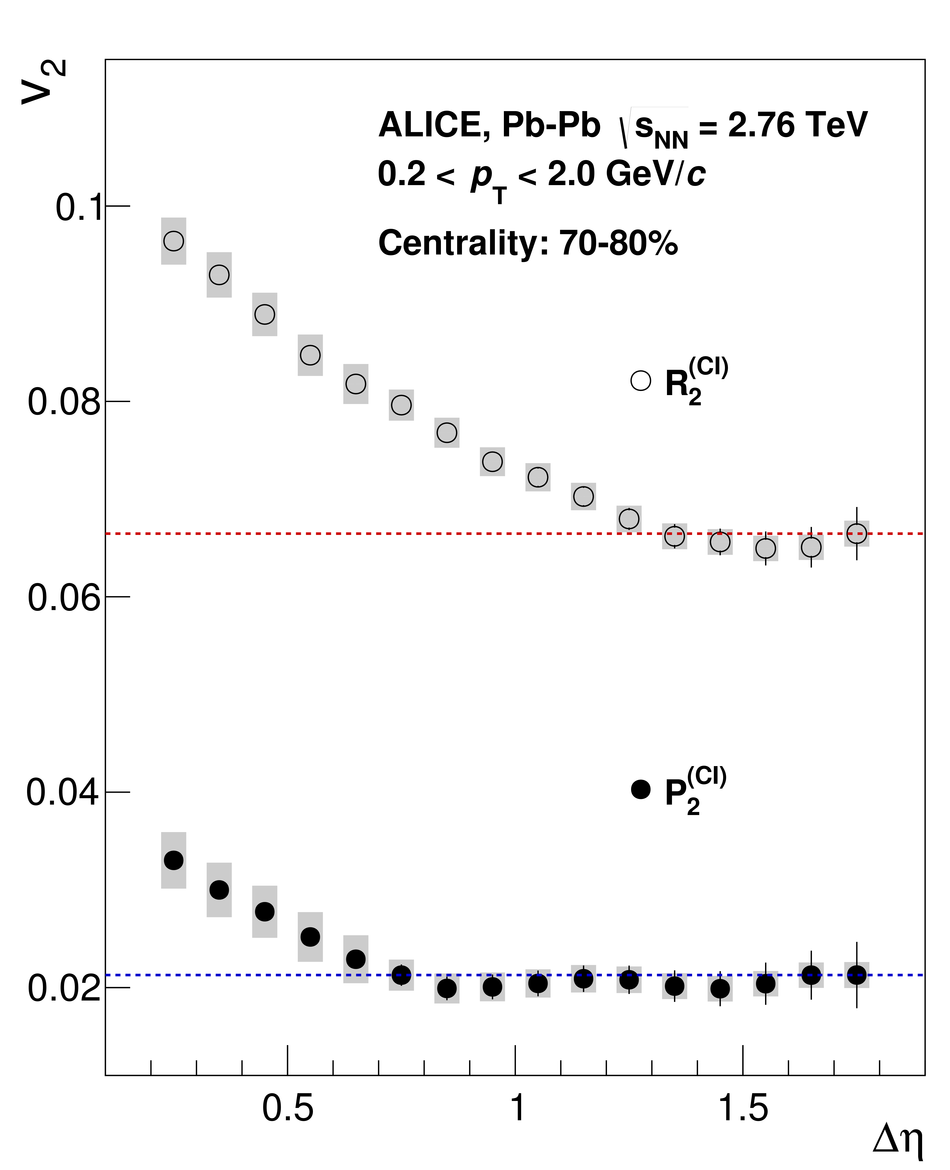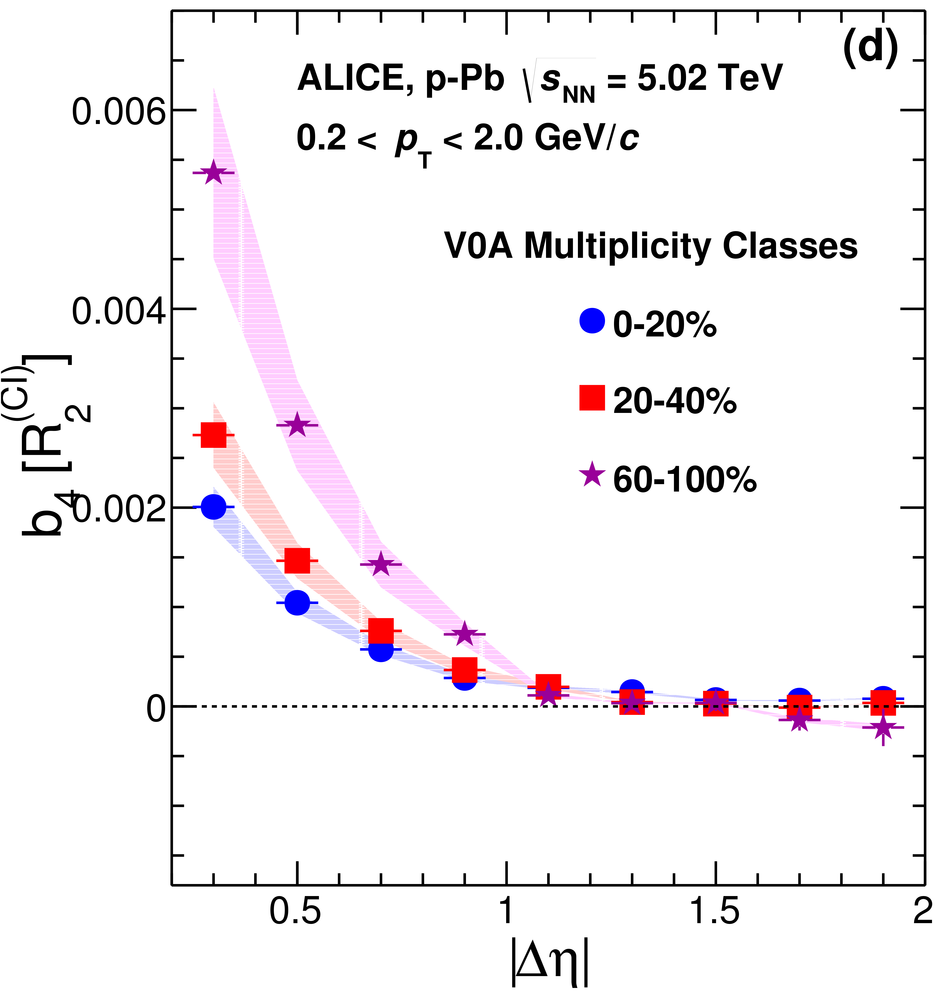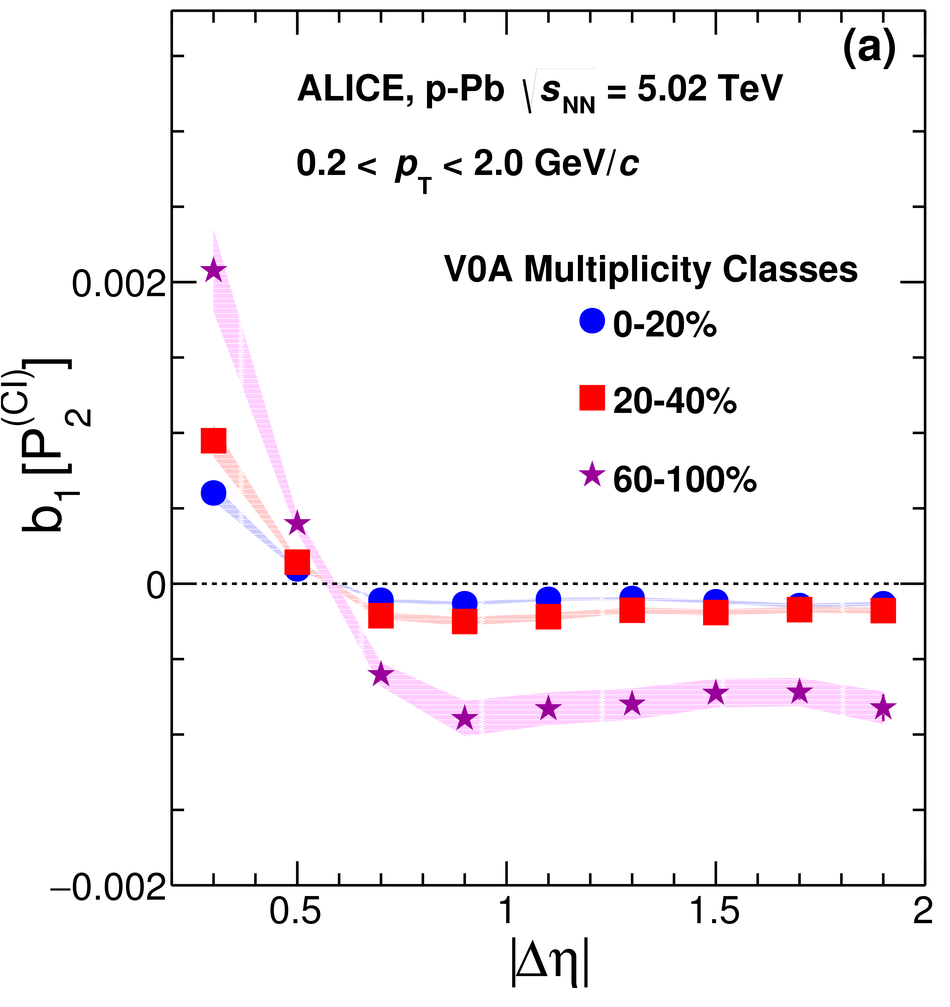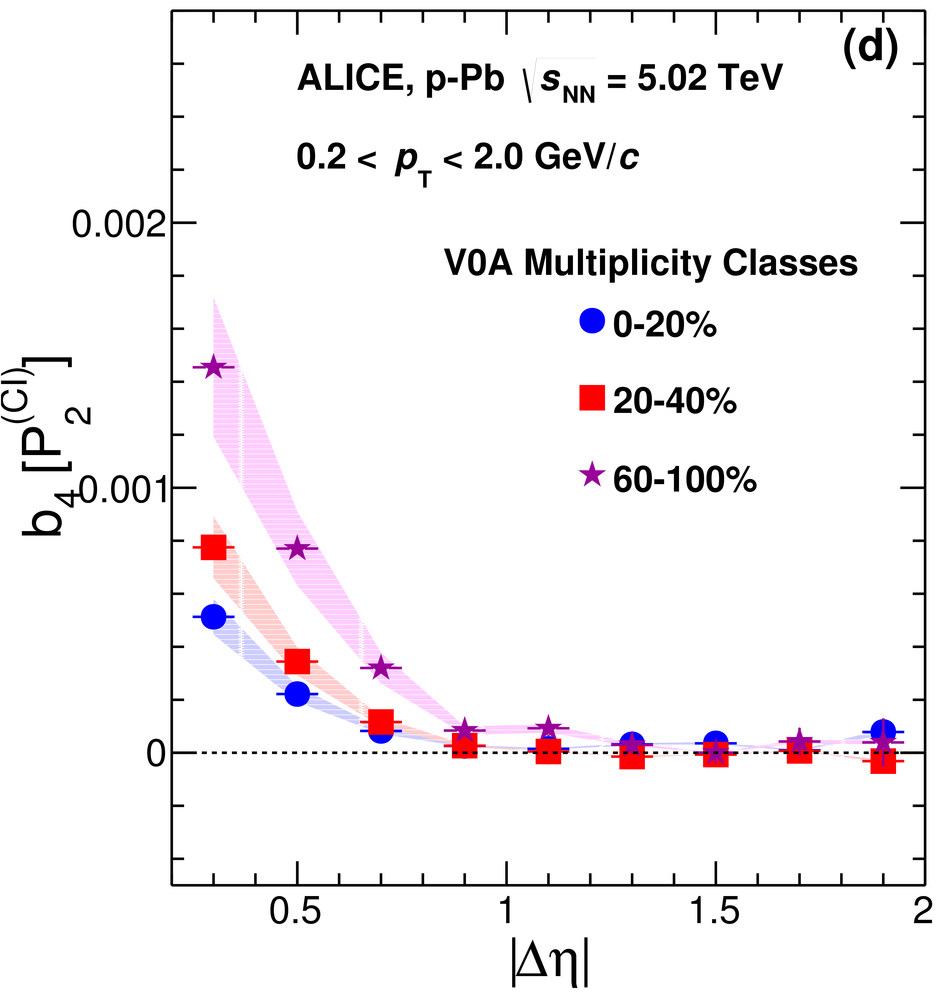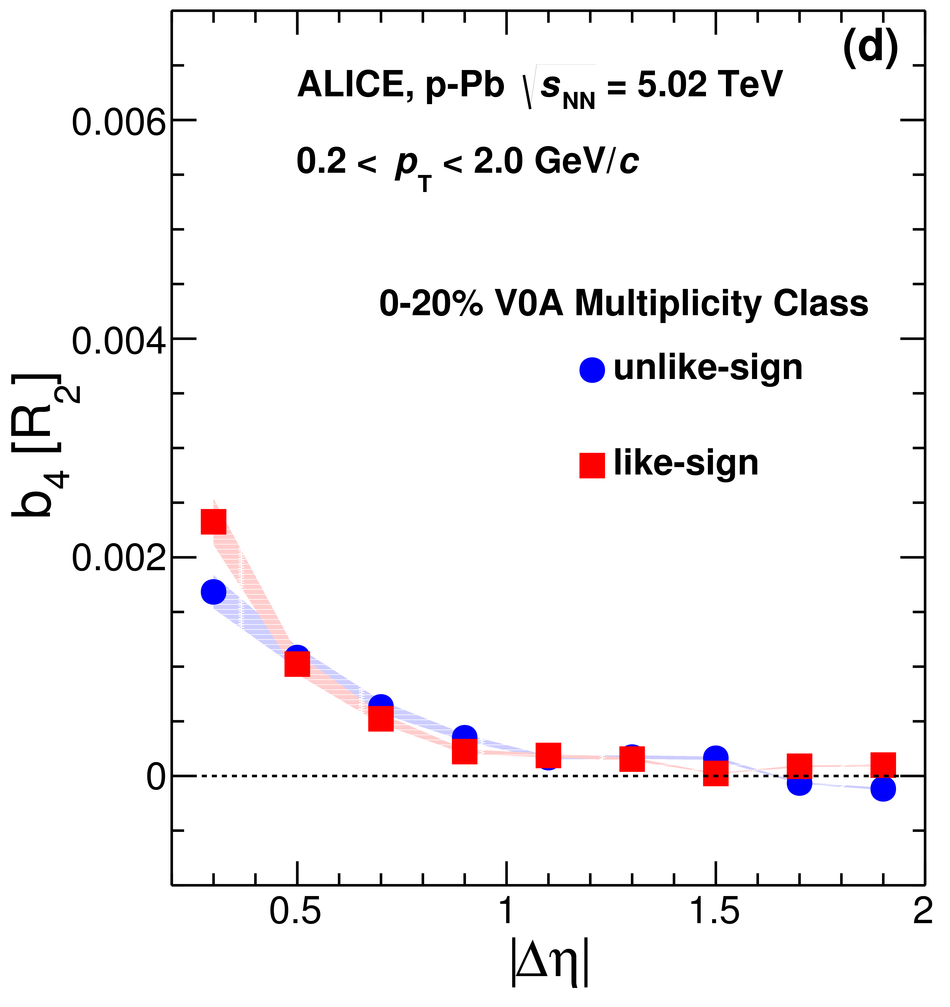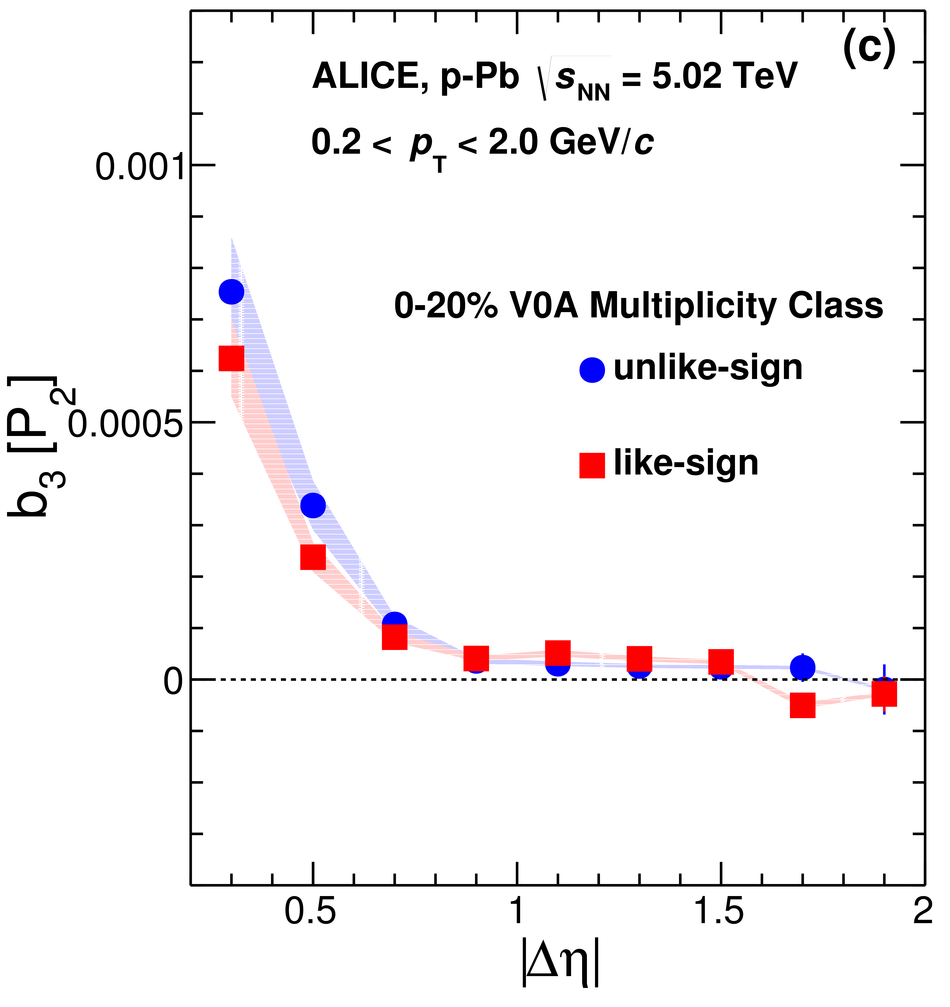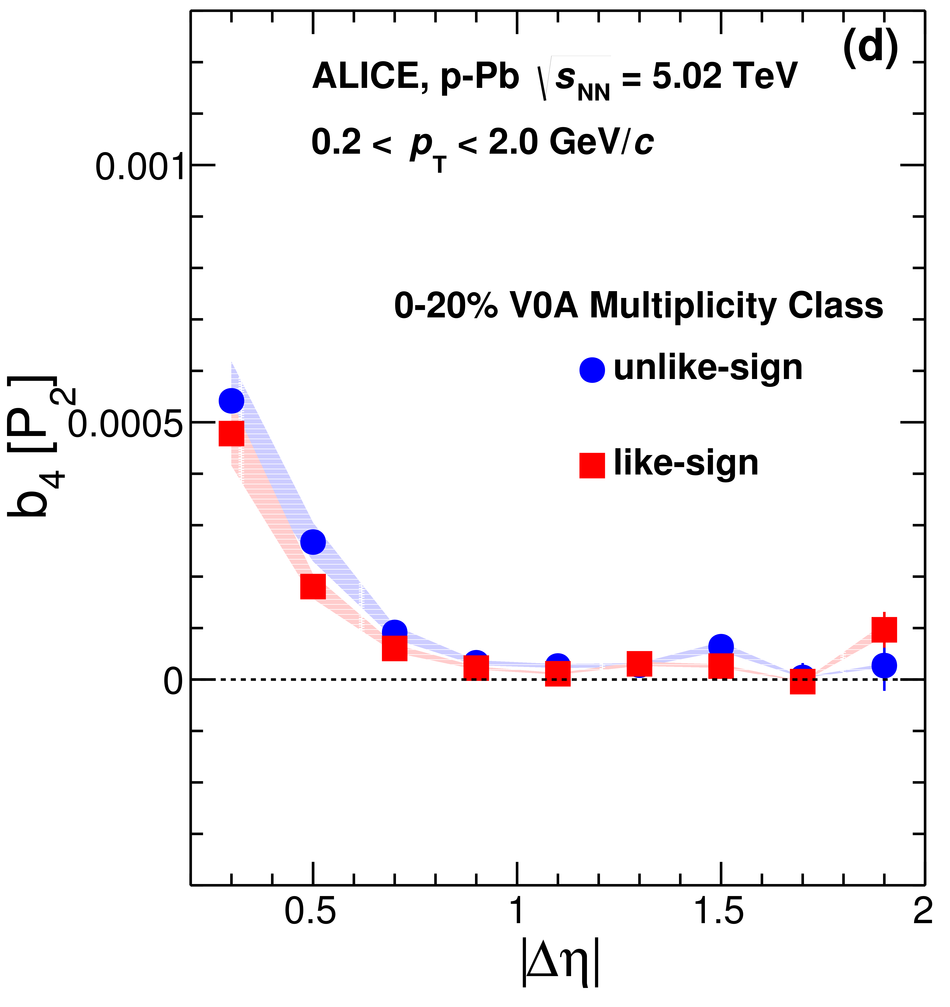We present measurements of two-particle differential number correlation functions $R_{2}$ and transverse momentum correlation functions $P_{2}$, obtained from p-Pb collisions at 5.02 TeV and Pb-Pb collisions at 2.76 TeV. The results are obtained using charged particles in the pseudorapidity range $|\eta| <~$ 1.0, and transverse momentum range $0.2 <~ p_{\rm T} <~ 2.0$ GeV/$c$ as a function of pair separation in pseudorapidity, $|\Delta\eta|$, azimuthal angle, $\Delta\varphi$, and for several charged-particle multiplicity classes. Measurements are carried out for like-sign and unlike-sign charged-particle pairs separately and combined to obtain charge-independent and charge-dependent correlation functions. We study the evolution of the width of the near-side peak of these correlation functions with collision centrality. Additionally, we study Fourier decompositions of the correlators in $\Delta\varphi$ as a function of the pair separation $|\Delta\eta|$. Significant differences in the dependence of their harmonic coefficients on multiplicity classes are found. These differences can be exploited, in theoretical models, to obtain further insight into charged-particle production and transport in heavy-ion collisions. Moreover, an upper limit of non-flow contributions to flow coefficients $v_{n}$ measured in Pb-Pb collisions based on the relative strength of Fourier coefficients measured in p-Pb interactions is estimated.
Phys. Rev. C 100 (2019) 044903
e-Print: arXiv:1805.04422 | PDF | inSPIRE
CERN-EP-2018-118



